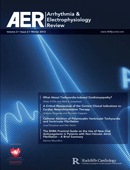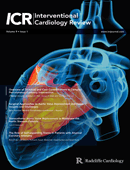Cardiology Education - Health Care Professionals for Patients

Heart disease is the world’s biggest killer and as such cardiology education is an important area for both patients and health care professionals. Continuing Medical Education (CME) is aimed at maintaining, developing and increasing knowledge, skills and performance of medical professionals. These activities may take place as live events, written publications, online programs, audio, video, or other electronic media. Content for these programs is developed, reviewed, and delivered by faculty who are experts in their individual clinical areas. Providers of cardiology education or continuing medical education can apply to the European Board for Accreditation in Cardiology (EBAC). EBAC accreditation means the scientific content of a CME activity was reviewed and approved by an independent board of European experts in cardiology and that the CME provider has fulfilled the EBAC quality requirements. It also means that the programme has been developed for an international audience, its scientific content is of high quality, it complies with the EACCME Guidelines on CME, and is free of commercial bias.
Heart disease articles for cardiologists can be found on Radcliffe Cardiology’s website which covers many specialities from acute coronary syndromes to surgery. Journals housed on this site include Arrhythmia & Electrophysiology Review (AER), European Cardiology review (ECR) and Interventional Cardiology Review (ICR). The heart disease articles are aimed at assisting time-pressured general and specialist cardiologists to stay abreast of key advances and opinion in these spheres.
A popular topic currently is heart stenting. The introduction and widespread adoption of drug-eluting stents into routine clinical practice has seen tremendous changes in the practice of interventional cardiology. For a prolonged period, manufacturers have focused research on drugs and polymers that are the key to the prevention of in-stent restenosis. However, heat stent platform design and its clinical implications have now come back to the fore. This has occurred for numerous reasons, but has primarily been driven by the need for modern stents to perform well in increasingly demanding clinical scenarios. It is likely that left main stem (LMS) perucutaneous coronary intervention (PCI) and the treatment of large vessel bifurcations will become a mainstream application of PCI over the forthcoming years. Manufacturers may need to consider producing dedicated platforms for the treatment of these vessels. As more patients with multi-vessel disease are treated greater attention will also need to be placed on longer-term outcomes in more demanding clinical settings.
Risks involved in PCI include bleeding from the site where the catheter was inserted into the skin, damage to the blood vessel from the catheter, arrhythmias, damage to the kidneys caused by the dye used during the procedure and an allergic reaction to the dye used during the procedure and infection. Arrhythmias are also discussed in a number of articles on Radcliffe Cardiology’s website. In the most recent issue of AER, arrhythmias in patients with adult congenital disease are covered. Arrhythmias in adults with congenital heart disease, most commonly related to previous surgical procedures, are a frequent comorbidity in this growing population thanks to the improved outcome of surgical techniques. Re-entrant circuits around areas of scarring and natural barriers, combined with abnormal haemodynamics and the underlying anatomy, are the most common cause for these arrhythmias.
